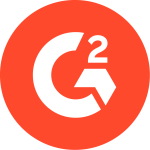Outputs a link formatted as a button.
Subpage List Examples
Browse Paid Memberships Pro Appearance Documentation
Widgets
Widgets let you add content and features to your site’s widget-ready areas—like sidebars, footers, and header banners. You can manage widgets under Appearance > Widgets in your WordPress dashboard. Paid Memberships Pro includes a single custom widget: Log In – PMPro. This widget gives members an easy way to log in and access their account (more…)
How it Works
The Subpage List shortcode pulls subpages of the current page or of a specific post type, category, or parent page by ID. The shortcode displays a list of pages or posts in a clean, configurable layout.
You can control which subpages appear, how they’re sorted, what content is shown (title, excerpt, etc.), and whether to display them in columns.
Use it to create a “section index” for services, team bios, documentation, or any nested page structure.
Use Case Ideas
- Team Members Page: Show bios of each team member as individual subpages
- Service Categories: Group services into subpages with icons and short descriptions
- Documentation Index: List all subpages under a parent guide or topic
Shortcode Attributes
cat: Accepts a single category ID (default: none)exclude: A comma-separated list of the page IDs to exclude from display. (default: none)include: A comma-separated list of the specific page IDs to include in the display. (default: none)layout: Set this attribute if you would like to list the pages in columns; accepts2col,3color4col. (default: 1 column)link: Hyperlink the page title; acceptstrueorfalse. (default: true)link_text: Text to show for the “more” link. (default: (…more) )meta_key: Accepts a single meta key and will only return posts where thatmeta_keyexists, regardless of themeta_value. (default: none)orderby: Accepts any orderby parameter as defined in WordPress developer resources. (default: menu_order)order: AcceptsASCorDESCas defined in WordPress developer resources. (default: ASC)post_type: The post type to include in results. Accepts a single value or a comma-separate list of post types. (default: page)post_parent: Override the parent page ID to pull in a different list of subpages; accepts any page ID or-1to include all pages. (default: current page ID)show: Displayexcerpt,content, ornone. (default: excerpt)show_children: Optionally display an unordered list of the child page’s children; acceptstrueorfalse. (default: none)tag_id: Accepts a single tag ID (default: none)thumbnail: Optionally hide or show the subpage’s featured image or assigned page icon; acceptsthumbnail,medium,large,icon, orfalse. (default: false)
Shortcode Example
Using the WordPress Block Editor Query Loop Instead
If you’re building pages using the core WordPress Block Editor (Gutenberg), you can use the native Query Loop block to create lists of posts or pages instead of relying on shortcodes.
When to Use the Query Loop Block
Use the Query Loop block if you:
- Prefer a visual, drag-and-drop editing experience.
- Want full control over how subpages are displayed.
- Are using a block-friendly theme like Memberlite.
- Need to build custom layouts using core WordPress blocks.
How to Add a Query Loop Block
- In the WordPress Block Editor, click the + icon.
- Search for and add the Query Loop block.
- Choose a layout (e.g., grid, list, cards).
- Use the block settings sidebar to:
- Filter by post type (e.g., Page)
- Set the parent page to limit results to subpages
- Order by title, date, or menu order
- Choose number of items per page
- Add inner blocks like Post Title, Featured Image, or Excerpt.
When You Should Still Use the Shortcode
Use the [memberlite_subpagelist] shortcode instead of blocks if:
- You’re adding content to masthead banners, bottom banners, or custom theme zones that don’t support blocks.
- You need a quick and consistent way to show child pages without configuring multiple blocks.
- You want to easily reuse subpage lists across multiple areas using a copy-paste shortcode.
Get Support From Our Team of Experts
For more help with this PMPro feature, check out our Support Page with three ways to get support as a free or premium member.
Last updated on August 4, 2025

